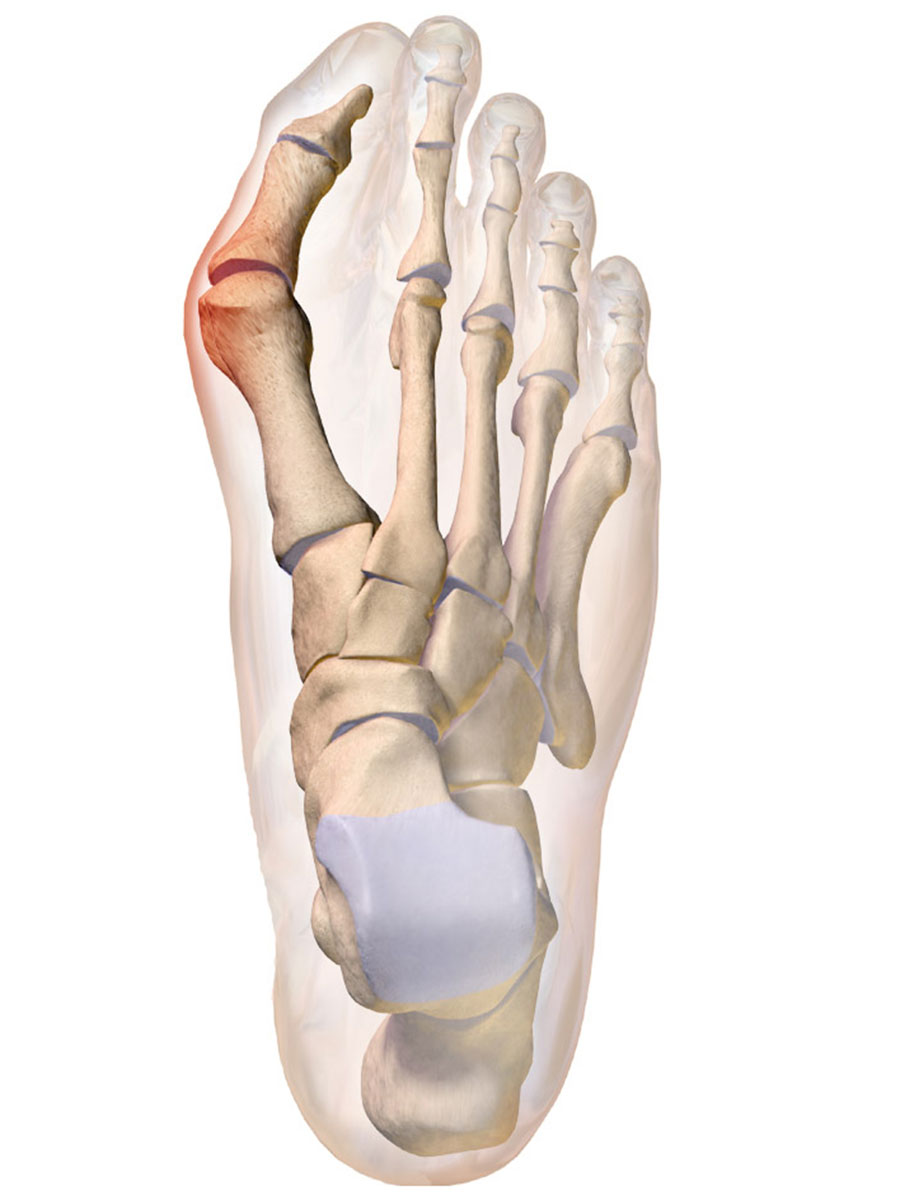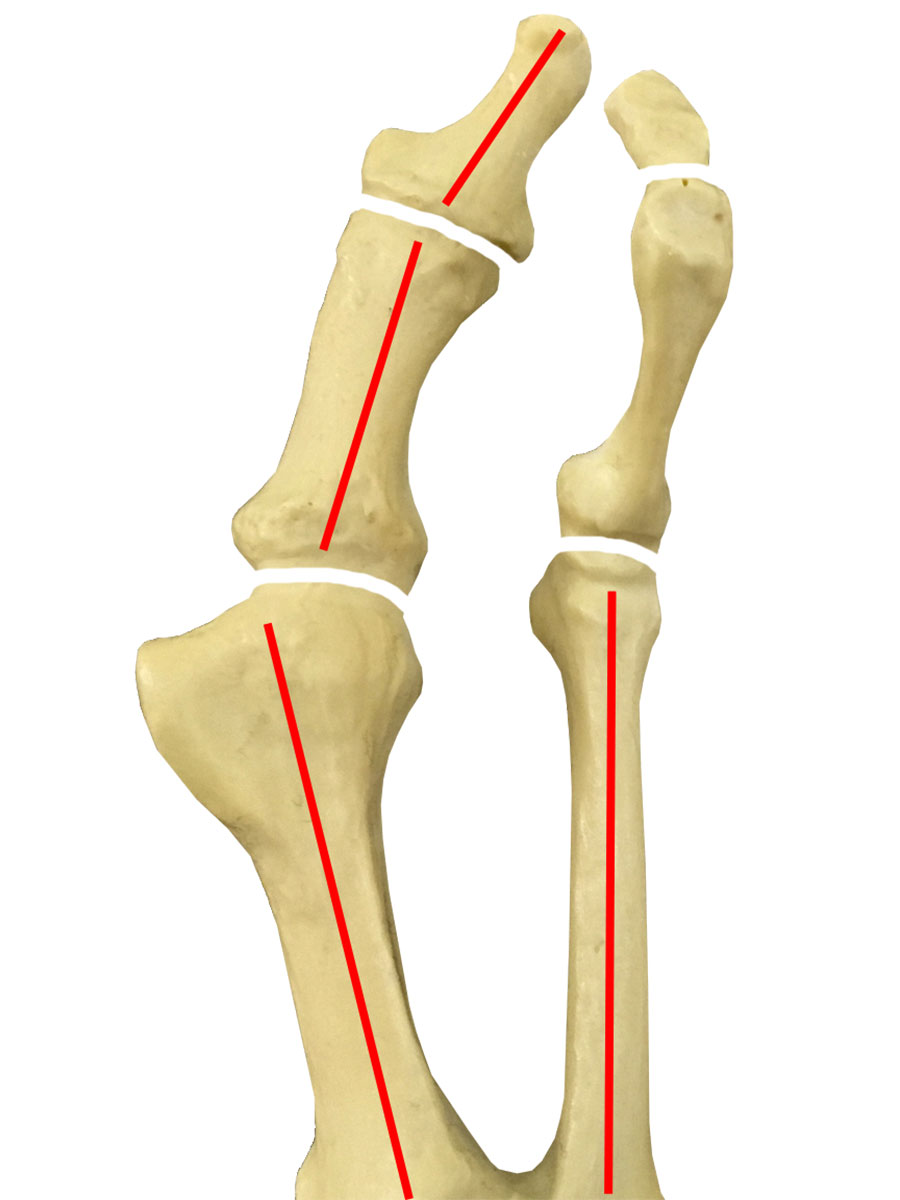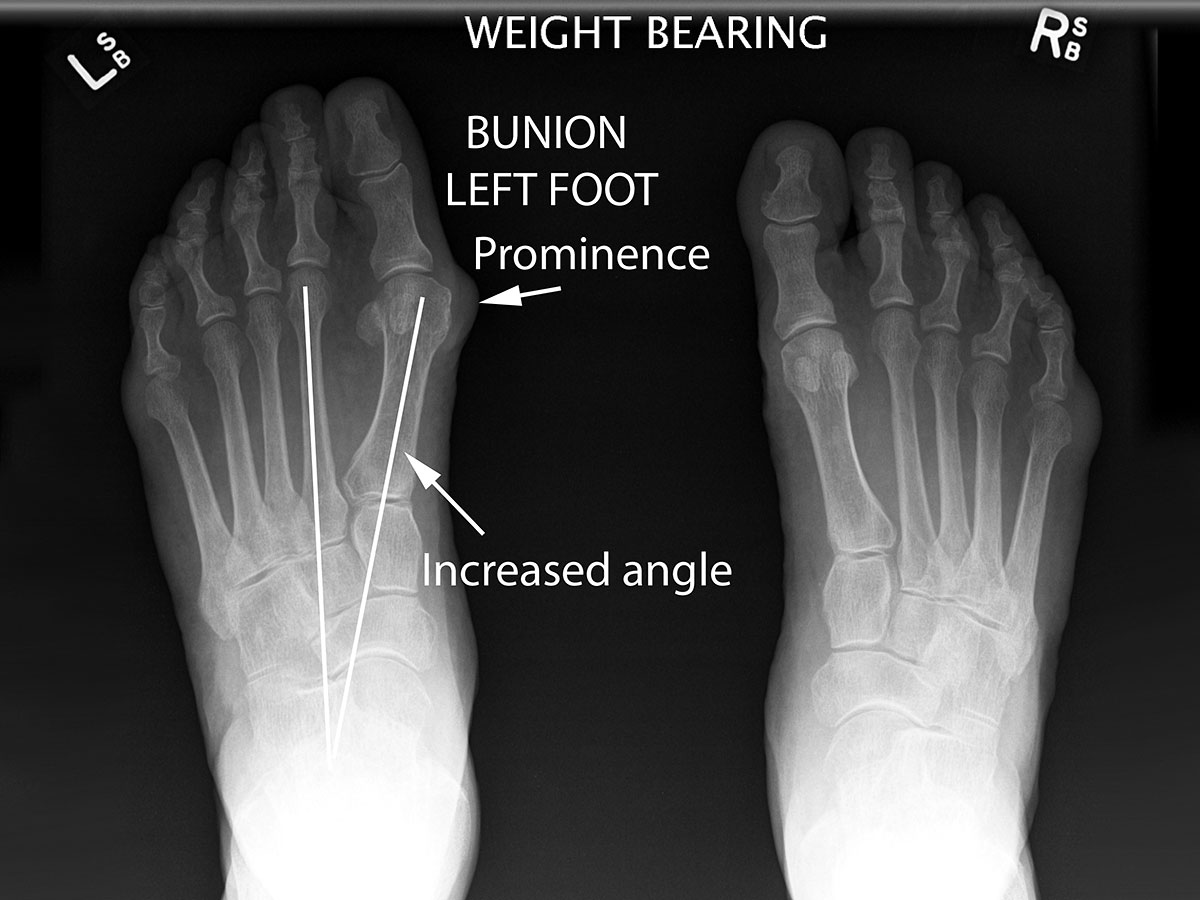Bunions
A bunion is the prominence that commonly occurs on the inner side of the great toe and the term encompasses the underlying bony prominence as well as the soft tissue swelling over it. Bunions are generally preventable and treated by wearing more appropriate footwear, and rarely require surgery. Surgery should only ever be considered an option for painful or troublesome bunions (and only after considering or trialing non-operative options).


Causes and Risk Factors for Bunions
Bunions may be associated with various diseases of the joints including osteoarthritis, but often there is no obvious underlying illness.
A bunion occurs as a result of a deformity in the big toe known as hallux valgus, where “hallux” = the 1st toe & “valgus” = abnormal bending towards the other toes.
Hallux valgus often occurs when the foot bone that joins with the big toe (the metatarsal) becomes splayed away from the other toes. This tends to force the joint against the inside of footwear. The sac, or bursa, that lies over the joint is irritated as a result. Inflammation of the bursa (bursitis) contributes to the swelling of a bunion.
Hallux valgus, resulting in bunions, affects 10 women to every one man. This may be because genetic and anatomical factors predispose women to developing the condition. But the main reason appears to be that women are more likely than men to wear ill-fitting shoes. The chance of having bunions is greater if one or more parents had them too.
High-heeled shoes, in particular, put abnormal strains on the bones and muscles of the foot. And shoes that push the toes together, force the big toe into a hallux valgus position.
Hallux valgus and bunions are much more common with increasing age.
Symptoms of Bunions
- Discomfort.
- Redness around the big toe joint.
- Swelling over the big toe joint.
- Difficulty in walking.
If osteoarthritis is also present, there may also be pain in the joint, made worse by ill-fitting footwear.
Diagnosing Bunions
Bunions can usually be diagnosed by simply hearing your account of how and when the problem developed and by examining the foot. An X-ray is taken to confirm the diagnosis, but also to assess for any secondary arthritic changes in the joint and to determine the most appropriate treatment. Learn about bunion correction surgery.

Claw Toes
Claw toes are very common and the term is often used to group all deformities of lesser toes together. A true claw toe is one that deviates up from the joint at the base of the toe and then curls down at the next two joints within the toe itself. Some toe deformities occur solely within the two joints of the toe (more likely a hammer toe deformity).
These deformities commonly occur due to tight fitting shoe wear but are also much more common in people with high arches due to specific neurological (nerve) conditions. The prominence of the top of the toe may cause rubbing pain on the inside of shoes, occasionally leading to skin ulcers and infections.
The majority of lesser toe deformities can be managed with shoe wear modification or the use of splints within shoes.
If rubbing of the prominence cannot otherwise be managed then claw toes can be surgically corrected. Surgery might involve tendon operations to change the deforming forces on the toe or bony operations. Occasionally a screw or pin is left in the toe to maintain a corrected position.
Morton’s Neuroma
A swelling or benign tumour growing on a nerve may cause pressure on the nerve and produce pain. This can occur between bones of the forefoot and result in pain running into the toes supplied by the specific nerve. The area may also have altered feeling or numbness due to the nerve not working properly. Tight shoe wear will add to the pressure effect. Treatment starts with modification of shoe wear, progressing sometimes to injections of cortisone to reduce swelling and finally to an operation to remove the benign tumour.
Removal of the tumour invariably also involves removing part of the nerve and leaves the space between affected toes numb.
Plantar Fasciitis
The plantar fascia is a strong band of tissue in the sole of the foot, which helps maintain the arches of the foot. It runs forward from the heel (calcaneum bone) and extends into the forefoot. When stretched – the plantar fascia may thicken and become inflamed. Pain may be felt deep in the sole of the foot and often comes on after a period of increased weight bearing or increased activity. The condition is diagnosed by its description, with physical examination confirming the condition. Tests are not necessary but often an ultrasound will demonstrate the inflammation and site of maximal tenderness. An XRAY is not required and there is often too much focus on the presence of a bone spur if an XRAY is performed. The bone spur is simply a small reaction of the bone at the site of plantar fascia insertion.
Most cases of plantar fasciitis respond very well to a stretching exercise program and the use of comfortable well-padded shoes. Cushion heel pads within shoes can be helpful. Cortisone injections into the plantar fascia and surgical procedures are very rarely required.
